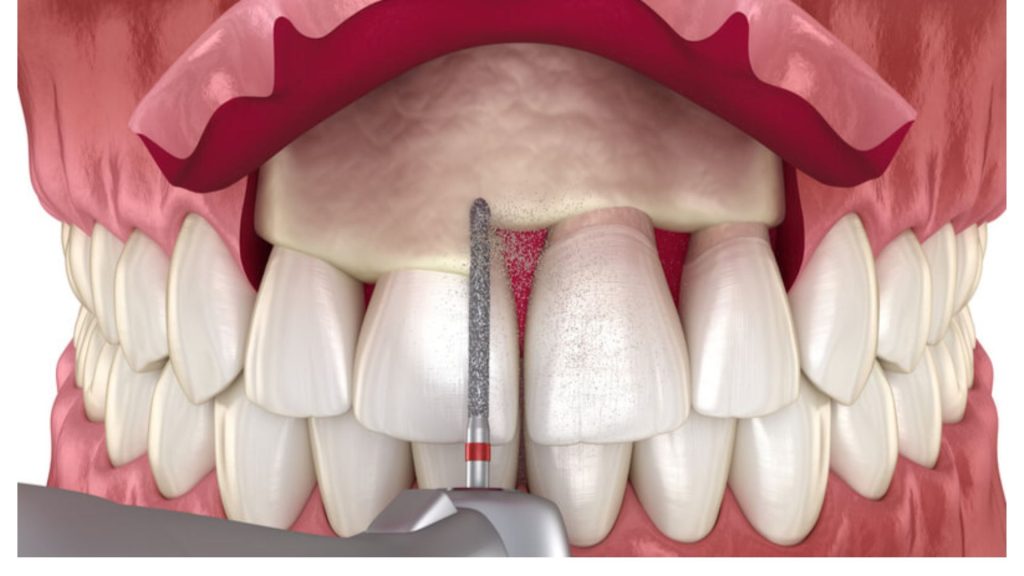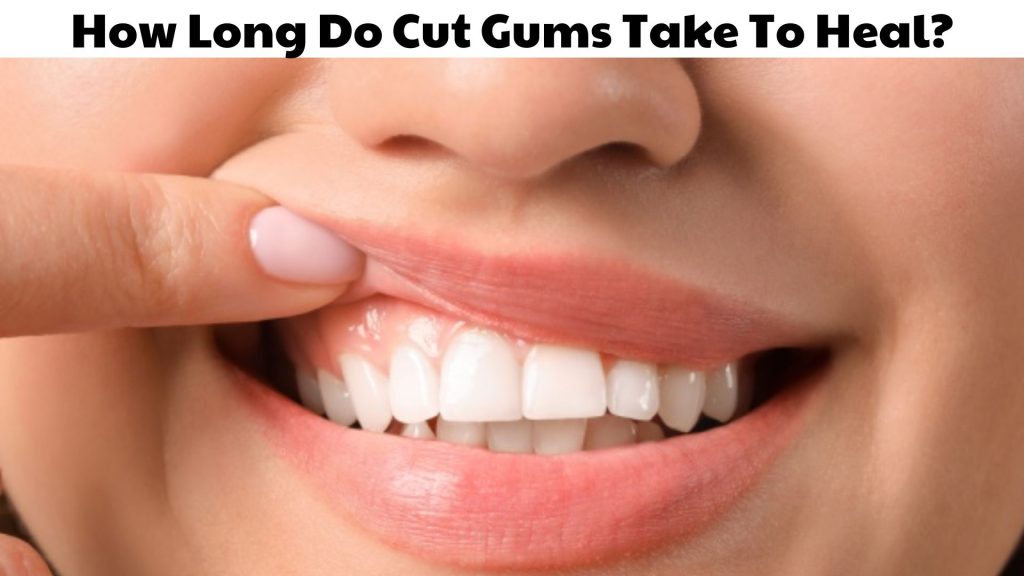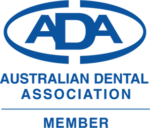How long do cut gums take to heal? Gingivectomy recovery without sutures takes 2 weeks. After a normal or laser gingivectomy, the wound will heal in 14 days.
Our entire health has always included oral health. The gums are vital in the mouth’s complicated system. More than simply a thin coating of soft tissue around teeth, gums defend and repair, keeping our smiles healthy. This page discusses how gums recover after damage, how to care for them after a gingivectomy, and why they heal quicker than skin. Let’s examine an essential oral organ.
What Is Gingivectomy?

Gingivectomy is a way of cutting away extra gums to show more of the tooth roots. The usual gingivectomy takes 30–60 minutes. When having minor surgery, the doctor will anesthetize the region to eliminate discomfort. Next, the dentist will cut the tooth to show more of the tooth root. After cutting the gums, the dentist sews sutures at the gum border to prevent scarring and patient safety.
Degree of a gummy smile:
- Mild receding gums: Smiles with gums showing more than 3mm and fewer than 25% of the teeth.
- Moderate receding gums: This level exposes gums above 25% and under 50% of the tooth crown while smiling.
- Severe gummy smile: When smiling, more than 50% of the tooth crown length is visible, indicating extensive gum recession.
- Severe gummy smile: When gum tissue extends beyond the tooth crown.
When Do You Need To Cut Your Gums?
Gingivectomy, or gum surgery, is seldom performed until absolutely required. The following are some common scenarios in which gum surgery is necessary:
- Gingivitis (gingival mound).
- Large gum swelling and discomfort.
- Deformed gums.
- Hard to clean teeth and gums.
- After gingivectomy (dry socket), swelling and inflammation.
After examining the patient, the dentist or periodontist decides whether to remove the gums.
How Long Do Cut Gums Take To Heal?

It typically takes a gingivectomy 2 weeks to recover fully without the need for sutures. Whether you select a regular or laser gingivectomy, it will take roughly 14 days for the wound to fully heal since the rate of regeneration of epidermal tissue in the gums is 1mm/day.
Gingivectomy is a small dental procedure that removes extra “gums” without causing any damage to the tooth structure. As a result, this procedure is quite safe for patients, with very few potentially harmful consequences. You must take your doctor’s suggested medicines to feel better throughout that time. The gingivectomy is done in the mouth and the gum border is repaired with cosmetic thread, so it leaves no scars.
Gingivectomy Recovery Follows The Following Procedures
Healing from a gingivectomy is an important process that needs to be taken care of carefully for your mouth to get better. How long a cut takes to heal depends on how deep it is and how bad it is. Proper care and cleanliness are also important. Here are some detailed directions on how to heal after a gingivectomy:
- The first 2 days after gingivectomy: The sufferer will feel the most agony. Each person’s discomfort depends on their physique and tolerance. Use medications to feel better.
- After 3 days, the patient’s gums shrank and felt better.
- By day 5, gums will virtually dry and stiffen. These sutures will be more noticeable.
- After 7–10 days, 70–80% of your gums will recover, allowing you to chew, drink, and grin. Gum removal is complete when the doctor removes the sutures and examines your gums.
How Long To Heal Gums And Alveolar Bone Grinding?
How much you grind or cut your gums depends on how healthy they are, and the mending time for these 2 ways is about 10 to 14 days.
For results and health, the dentist will show you how to care for your teeth following minor surgery. The dentist will check and grind the alveolar bone plus execute a gingivectomy. The dentist will balance, grind the alveolar bone, and cut the gums instantly. Aesthetic gingivalctomy is an excellent treatment for gummy grins. Sometimes the jawbone protrudes, giving a gummy grin.
Factors Influencing Gums Healing

To get back on your feet after having your gums shaved, healing after the procedure is essential. Gingivectomy is only one of several factors that might change it. Let’s take a closer look at a few of these factors to see how they contribute to the healing process:
First, the size and depth of the cut are very important. The time it takes for a wound to heal increases with its size and depth. Additionally, wound care and cleaning are crucial.
In order to keep the wound clean and free of infection, gargling with warm salt water or an antiseptic solution on a frequent basis is recommended. The healing process is also affected by age and personal health state. Younger people recover quicker than older people.
Overall health and genetics are also factors. Healing may be delayed and there is a greater risk of infection if you have immunological issues or other medical disorders.
Also, diet matters. In the first few days after a gingivectomy, avoiding hard foods and hot liquids can help keep the surgery area from getting hurt.
Finally, follow your doctor or dentist’s wound care and cleaning recommendations for easy recovery.
After Gum Surgery, What Should You Eat And Avoid?
Eating well is crucial to getting back on your feet after having your gums surgically removed (gingivectomy). Here are some dietary and fasting guidelines to follow following oral surgery for optimal wound healing:
What Should Gum Surgery Patients Eat?
After having gingivectomy surgery, you should focus on getting enough nutrients from meals like:
- You shouldn’t risk shifting the position of your freshly shaved gums by eating anything other than soft, easy-to-swallow meals like oatmeal, cereal, soup, porridge, etc.
- In order to boost immunity and speed up the healing process, it is recommended to consume more green vegetables, fresh fruits, veggies, etc.
- Eating yogurt daily after having gums removed is another healthy and efficient strategy to reduce discomfort.
- Pork and ginger have anti-inflammatory wound-healing and bacteria-fighting qualities.
Foods To Avoid After Gum Surgery?
To speed up the healing process, there are both meals you should consume and foods you should avoid: Keep in mind that spicy and hot meals might irritate the area and impair the incision.
- Avoid meals like spinach, poultry, shellfish, and beef that may cause the surgical site to grow and induce purulent inflammation, since these foods can leave black scars and receding gums.
- Foods that are excessively firm and chewy might cause injury to the surgical gum region. Bleeding, swelling, discomfort, and sensitivity are more significant.
- Sticky rice-containing foods should be avoided since they might promote pus swelling in the incision.
The Bottom Line
We discussed the wound healing process following gingivectomy and the appropriate nutrition during this time. For gingivitis or oral health issues, Spring Orchid Dental Clinic offers inspection and treatment. We provide focused oral health treatment and professional guidance from a team of top dentists.
At Spring Orchid Dental Clinic, we treat gum disease and other tooth issues. For guidance or more information, contact our clinic. We are always here to assist you in improving your dental health and smile.
FAQs
Do Cut Gums Heal On Their Own?
No, it isn’t. After gingivectomy, wound healing takes time and attention. The breadth and complexity of the procedure, your health, and how you care for your mouth following surgery determine this. Post-operative care is critical for a speedy recovery. Follow medical advice and avoid practices that harm the cut.
Additionally, swelling and soreness are normal reactions that may be decreased with doctor or dentist-prescribed medication. Always keep an eye on the healing process, and if you have any worries or strange symptoms, contact your doctor for specialized guidance and tests. Getting the greatest gingivectomy outcomes demands time and attention.
What If I Accidentally Cut My Gums?
If you cut your gums by accident, it’s critical to act swiftly and correctly. The following are the actions you should take:
- Stop immediately: Avoid bleeding by stopping quickly if you inadvertently cut your gums.
- Rinse your mouth: To eliminate blood and keep your mouth clean, rinse it with warm water. The use of salt water or peroxide water is not recommended since they might cause irritation.
- Apply pressure: Use clean gauze or cotton balls to lightly push the bleeding area. Helps blood coagulate and halt bleeding.
- Contact a medical professional: After dealing with the first crisis, see your dentist or doctor for guidance and a mouth checkup. A medical practitioner may assess the injuries and recommend therapy.
In summary, if you have severely cut your gums or the wound won’t stop bleeding, you may need to go to the nearest hospital or emergency room for immediate medical attention to protect your mouth and avoid infection.
Do Gums Heal Faster Than Skin?
Most of the time, gums heal quicker than skin. This is due to the lips’ abundance of blood arteries, ability to produce new cells more rapidly, and ability to defend themselves. Gums contain more blood arteries and white blood cells than skin, therefore providing nourishment and white blood cells to the damaged area promotes healing. Blood is essential in ensuring that the gums recover fast.
Although gums heal faster, the size and depth of the cut, your health, and how you care for it may all have an impact on how long it takes to recover.





